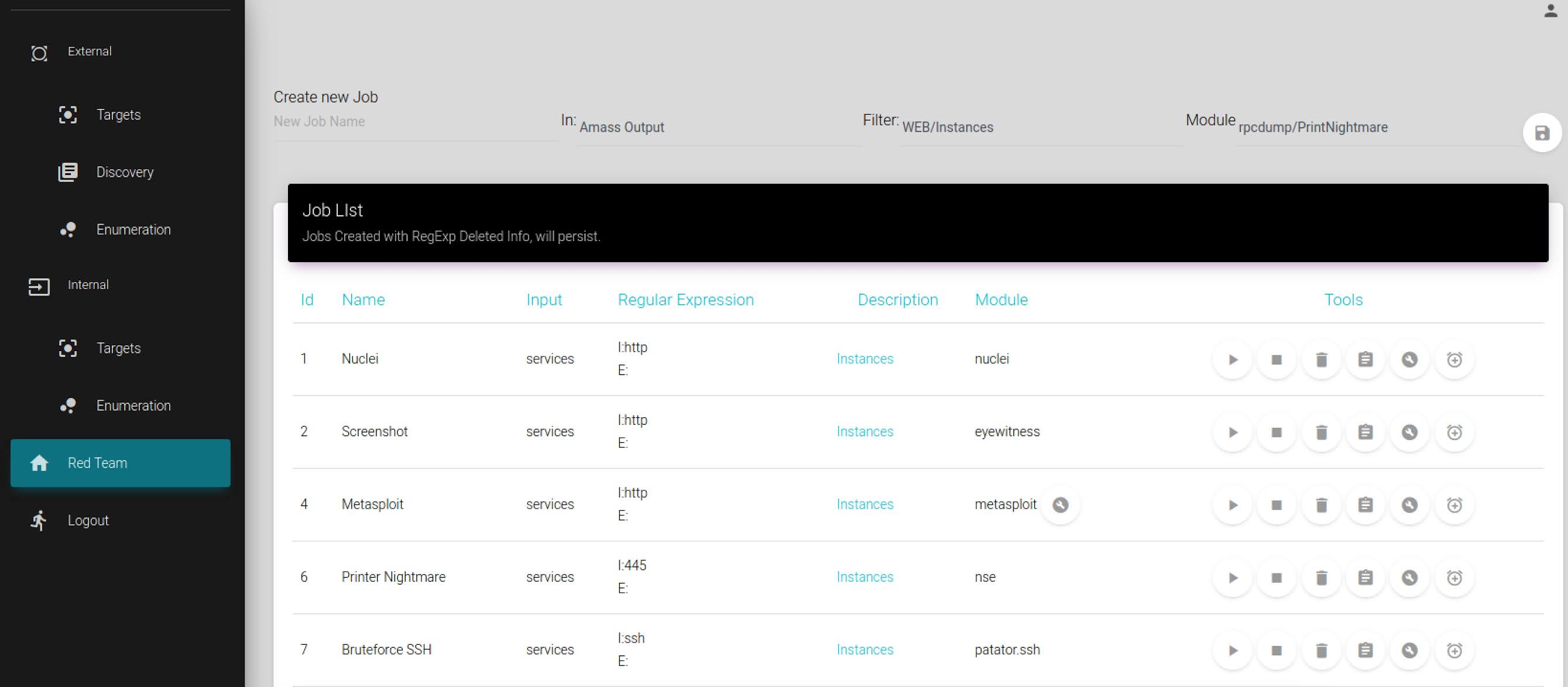Attack-Surface-Framework aims to protect organizations acting as an attack surface watchdog, provided an “Object” which might be a: Domain, IP address or CIDR (Internal or External), ASF will discover assets/subdomains, enumerate their ports and services, track deltas and serve as a continuous and flexible attacking and alerting framework leveraging an additional layer of support against 0 day vulnerabilities with publicly available POCs.
The lack of support and flexibility to automate discovery of dynamic assets and their associated vulnerabilities through continuous scanning or exploitation in a single pane of glass was the driving force in the creation of ASF, the current solutions are restricted by the technology or the program they are built for, we wanted a solution that is scalable as well as utilizes popular Open Source security tools for handling a full vulnerability lifecycle.
ASF is a breed of open source projects leveraging a powerful arsenal of tools wrapped in a single pane of glass on top of a GUI. ASF architectural diagram illustrated below:

Prerequisites
Latest version of Kali Linux (tested on 64 bits) – https://kali.org/get-kali/
16 GB of RAM at least
1 TB HD – XFS filesystem recommended
As root
git clone https://github.com/vmware-labs/attack-surface-framework.git /opt/asfcd /opt/asf/- Run
./setup.sh - Assign your user, email and yourpass
Once the installation is completed
cd /opt/asf/frontend/asfgui/. bin/activatepython3 manage.py runserver 0.0.0.0:8080– We recommend to run it on a screen session to leave server persistent (screen -S asf)
ASF is not meant to be publicly exposed, assuming you install it on a cloud provider or even on a local instance, we recommend to access it using port forwarding through SSH, here is an example:
ssh -i "key.pem" -L 8080:127.0.0.1:8080 user@yourhost – For ASF GUI
ssh -i "key.pem" -L 9045:127.0.0.1:9045 user@yourhost – To access Graylog2 Panel
Then open your browser and go to:
http://127.0.0.1:8080 – For ASF – user:youruser pass:yourpass (provided in initial setup)
https://127.0.0.1:9045 – For Graylog2 – user:admin pass:admin #Change it in /graylog/docker-compose.yaml
Graylog2 requires a few steps to start receiving logs from ASF:
Once logged in, go to System/”Content Packs” and import the Content Pack located at /opt/asf/tools/graylog/content_pack_ASF.json, click on the “Upload” button and you should see “Basic” reflected in the “Select Content Packs” section, click on “Basic”, make sure the “ASF” radio button is selected and hit the “Apply content” button, this will create the Global input to parse JSON logs and related extractors.

Now you are ready to receive logs from ASF and setup your streams / alerts / dasboards !
More info @ https://docs.graylog.org/en/4.1/
ASF has two scopes:
A) External: For your publicly exposed assets.
B) Internal: Assets in your corporate network.
For the External scope, the flow goes through four basic steps:
A.1 Targets – Here is where you input your targets

A.2 Discovery – Module that runs the Amass process to discover publicly exposed assets, feel free to create your configuration file to setup your API keys https://github.com/OWASP/Amass/blob/master/examples/config.ini

A.3 Enumeration – Module that runs the NMAP process to enumerate ports/services and create filters for the Redteam module. Default setup is to look for --top-ports 200 but you can suit it to your needs in /opt/asf/tools/nmap/*.sh

A.4 Redteam – Module that runs submodules located in “/opt/asf/redteam”

Note: For the Internal scope, the flow goes through A.1(Targets),A.3(Enumeration) and A.4(Redteam).



























